| Umělec 2008/2 >> XYZ All that’s Important ... is Within Your Reach | Просмотр всех номеров | ||||||||||||
|
|||||||||||||
XYZ All that’s Important ... is Within Your ReachUmělec 2008/201.02.2008 Daniel Grúň | profile | en cs de es |
|||||||||||||
|
In 1997, XYZ formed and descended upon the Bratislava art scene, its roster including Milan Tittel (1966) and Matej Gavula (1972).
They have held several independent exhibitions such as XYZ at UBS (1998) (originally as part of a trio including Peter Ondrušek), Opening at the Cyprian Majerník Gallery (2000), XYZWAR at the Priestor Gallery (2001), as well as XYZ in the Prague Display Gallery (2002) and SEXYZ in Bratislava’s Buryzon Club (2002, 2003). Recently, during the independent exhibition, Distance X (2005) in the Tranzit studios they took part in various international projects, for example, Proti všetkým (Against Everyone, 2007), Bridging (2006–2007), Spaced Out 0.1 (2007), Donau Monarchie (The Danube Monarchy, 2006), Panteón: hrdinovia a anti-pomníky (Pantheon: heroes and anti-monuments, 2006), Relocation Shake (2004), Tomu ver ty... (You Better Believe it You ... (a-hole), 2004) and Československo (Czechoslovakia, 2003), to name a few. The focal point of XYZ’s endeavors stems from a contextual exploration of their own discipline—sculpture. Their work produces a tension through their forced collision of material artifacts in plastic forms, process-transformed materials and found statues captured by digital cameras. One could say their work mimics local post-communist environments; it is a function of the privatization of public spaces and the transformation to a market economy. XYZ’s work straddles the border between sculptural plasticity, spatial installation, digital photography and performance art. The tandem’s work also presents references to the cultural situation of Július Koller and the Slovak version of Actionism and Conceptualism dating back to the 60s and 70s. These references are not extrovert in nature, but can be seen in the artists’ concepts and processes. Despite the fact that the XYZ group is a unique phenomenon within the Slovak art scene, some trends visibly link their work to that of Roman Ondák and Cyril Blaž. Ondák is known for his particular way of working with photographs and generating spatial situations, which he leaves open for viewers to sort out themselves. Among the artists mentioned, we will find common ground in their particular way of working with the past, i.e. which material signs or memories they harness and bring into the present. Another common moment is without a doubt found in the un-classical position of artifacts and their research on possibilities for artistic expression. Their sculptural outputs serve as experiments in which they deconstruct images while infusing them with the ability to imitate space—it’s creation through destruction. At other times their works act as “enclaves” which pass across spaces like sound waves. XYZ’s conceptually ideal basis balances out with their material approach and use of certain expressive resources typical of classic sculpture. However, for them a sculpture is defined principally as an active, open, spatial network, i.e. it is a knot or a rope of material reactions to impulses from various levels and directions, it is whatever it is subjected to. XYZ’s work is characterized as an oscillation between stability and instability, between monuments and miniatures, maintaining resonance with a game between moments captured on digital records and the objective presence of plastic materials. Raw material materialism. One could say the XYZ group explores the issue of contemporary materialism as they examine the paradox of special situations, volume and dimensionality vs. found, digital photographs of sculptures. The differences are first and foremost noticed in relation to the varying economic values of their materials as consumer commodities. The situations composed by the XYZ duo have the traits of subtle shifts, where the object changes into raw material and the raw materials into broadcast signals. The events, spatial projects and the sculpture objects of Matej Gavula and Milan Tittel are typified by their maintaining of a permanent tension between the material substance of an artifact and its dematerialization, often through its merging with the environment. In their works we repeatedly see the question of value and non-value, or the question of real vs. artificial value. They work with raw materials from global trade, as well as with products that result from analyses of local social relationships (coffee, sugar, oil, coins, cash, etc.). Their method of work could be described as raw materialism, through which XYZ isolates raw material by extracting it from the commercial merry-go-round and leave it in its non-repeating form. Their most specific works are those that react directly to contemporary value systems. These are realized in public spaces in contrast with the continuity of the values systems valid during socialist times, i.e. monuments and modernist architecture. Stuff for the floor XYZ organized the performance-installation, Raw Petroleum (2004), in the spaces of the Bratislava Transit Factory (workshop) as part of the exhibit Tomu very ty ... (You Better Believe it You ... (a-hole)). The simple act of overturning barrels of crude oil onto the factory floor was, at the time, meant to address global politics and mainly the bloodshed in Iraq. Today the multiple series of so-called floor pieces are used by both artists, while perhaps the best known is the work by Milan Tittel, Bez názvu (Untitled, 2004) shown as part of the international project, Relocation Shake, in Trnava. It consists of a seven-meter long horizontal piece composed of Slovak ten-crown coins having a total value of 1000 EUR. That was the artist’s budget for creating the work. Through use of the borrowed language of the horizontal slabs of Carl Andre, Lever (1966), a statement of minimalist sculpture, a work of its literal, raw material, production value was born. Another work from this continually open progression appeared at Bastart Gallery’s exhibit, Proti všetkým (Against all). While one element of the piece concentrated on the transformational moment of sugar cubes melting into an amorphous, gluey mass, the other developed as a plaster-of-Paris mould of a mole-hill, Untitled (2004). The last contribution to this series of works appeared at the exhibit, Moja vec, čo nemusí byť moja (My Thing that Need not be Mine), again at the Bastart Gallery. The small-scale object created from shredded bank notes with a value of one million Slovak crowns, Million (2007), was enclosed in a cube made from transparent packaging. The bank notes shredded into very narrow strips fill up the whole plastic cube and here and there fragments of printed text chaotically peak out. Cloned identity A further provocation of XYZ creations is the desire to explore the process of extreme reduction and enlargement of objects and how this procedure affects the ideological distributions of power inherent in size. Projects in this vein include the series of miniaturized copies of statues by Czernowitzer Austria for the Bridging project (2006–2007) and shrunken replicas of humorous statues from Bratislava’s historic center for the project, Panteón: hrdinovia a anti-pomníky (Pantheon: Heroes and Anti-Monuments, 2006). The multiple copies, in carnival-style reductions bordering on kitsch, act as an eerie replacement resembling something else, yet not its complete clone. The XYZ group pays close attention to modernist monuments and memorial sites from the Communist era, exploring them in the context of contemporary cultural policy. Pieces where XYZ worked with plastic self-portraits first appeared at the Distance X exhibition with works like Skupinový portrét–trojitá prítomnosť (Group Portrait–Triple Presence, 2005). The piece consists of a seven-centimeter epoxide figure placed in a shop window with a large-format photo enlargement placed on the wall behind the figure. The individual hand-made figures were modeled after the actual features of Milan Tittel and Matej Gavula in a variety of mundane positions. With the photographic enlargement to beyond-life-size formats, the miniature figures return to the “hyper-real” world and a group of figures created by the reproduction of two plastic self-portraits can morph into a crowd of clones. Placed in mundane positions, the miniature figures call to mind certain works by the Polish artist Paweł Althamer. A number of further works build on the principle of the self-portrait and its intrinsic ability to enter into any environment, space, situation or event that its creator/model see fit. Examples of this type of creation are Stretnutie s Kofim (Meeting with Kofi, 2006), a fictional meeting of representatives of global politics, placed in a model of futurist architecture and Multirezidenti (Multiresidents, 2007) which remotely calls to mind Antinomádi (Anti-nomads), a work by Roman Ondák. But at the same time these are figurines—the artists’ alter egos that enter into the private space of their friends and acquaintances. Instability concept XYZ also developed the principle of motion in their later works. In the case of the piece, XY Chromosome (2006), movement comes into play: both its artistic rendering and records of its wax molding. The capture of movement in creations by pliable wax or plasticine evokes bodily feelings and sparks an awareness of ones body’s existence. In small, figural compositions, movement is shown in both its possibilities and limits. The soft plastic material demonstrates it as both freedom and restriction. The miniature, several-centimeter compositions are based on recollections of children’s games, during which various methods were used to exercise the limbs. The movements involved become an actual theme for the individual compositions of mutual relations between two people, expressing the proximity of their bodies in hardly dramatic, but rather humorous and intimately close positions, exposing the limits of body movement. Again XYZ used the principle of transfer of one’s own identity to plastic materials. The figures’ movements are more clumsy and awkward, rather than gymnastically inclined. The bronze castings of the couples remained chained to the “excessive” material mass. On the other hand, individual compositions bring to mind the shape of the XY chromosome—something expressed in the name of the work and once again evoking the idea of cloning. The identity of the individual in the most intimate area—skin—is also addressed in certain independent works by Milan Tittel, i.e. the piece, Vakcinácia (Vaccination, 2006), shown as part of the billboard project, and Donau Monarchie (The Danube Monarchy). Even if the majority of the works are based upon the concept of plasticity, founded with spontaneous material contact, XYZ transforms material during the digitalization process and presents many versions of its “sculptures” as photographs. These come about based on interventions in diverse dimensions that alter volume and space: interventions that record, change and shift the hierarchies of relationships.
01.02.2008
Рекомендуемые статьи
|
|||||||||||||
|
04.02.2020 10:17
Letošní 50. ročník Art Basel přilákal celkem 93 000 návštěvníků a sběratelů z 80 zemí světa. 290 prémiových galerií představilo umělecká díla od počátku 20. století až po současnost. Hlavní sektor přehlídky, tradičně v prvním patře výstavního prostoru, představil 232 předních galerií z celého světa nabízející umění nejvyšší kvality. Veletrh ukázal vzestupný trend prodeje prostřednictvím galerií jak soukromým sbírkám, tak i institucím. Kromě hlavního veletrhu stály za návštěvu i ty přidružené: Volta, Liste a Photo Basel, k tomu doprovodné programy a výstavy v místních institucích, které kvalitou daleko přesahují hranice města tj. Kunsthalle Basel, Kunstmuseum, Tinguely muzeum nebo Fondation Beyeler.
|








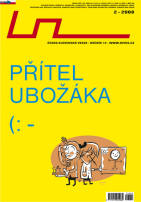
























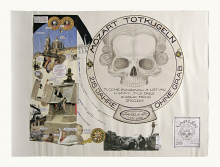
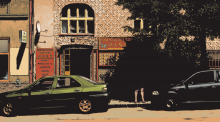
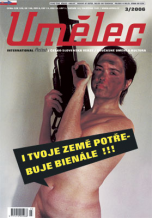
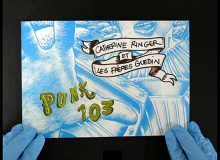


 New book by I.M.Jirous in English at our online bookshop.
New book by I.M.Jirous in English at our online bookshop.
Комментарии
Статья не была прокомментированаДобавить новый комментарий